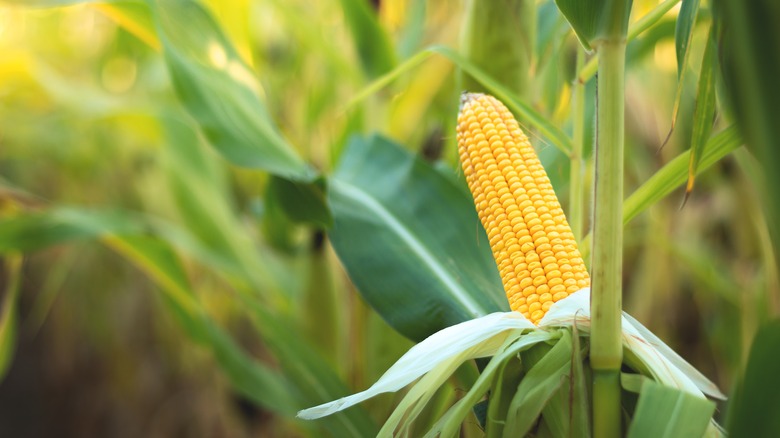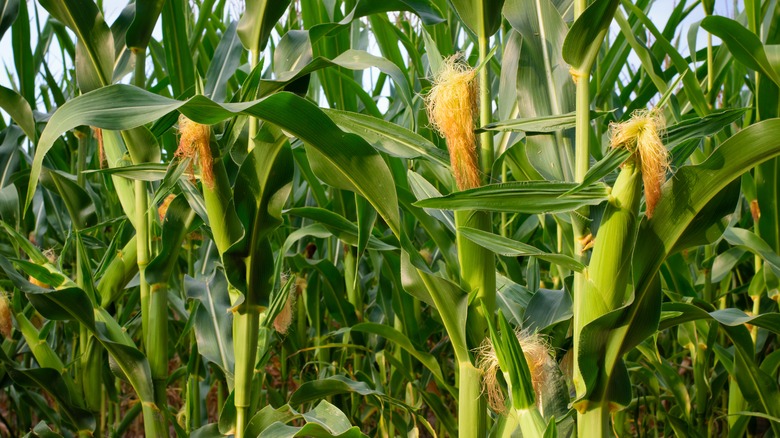Why The Number Of Rows On Corn Is Almost Always Even
An aesthetically pleasing standby — or perhaps something you've actually not previously noticed — is the sheer symmetry of an ear of corn, especially in regards to the rows of kernels. While the ends of the cob differ (and the husks and silks can be annoying as all get out), the "lines" of kernels — orderly and unchanging — are a fascinating glimpse into agriculture and the physicality of produce.
As noted by Purdue University Department of Agronomy, "Row number and kernel number per row are two of several yield components in corn." Each cob (or ear) tends to have between 750 and 1000 "potential kernels," but only 400 to 600 usually come to fruition. Kernel rows begin as "ridges of cells that eventually differentiate into pairs of rows," hence why there's always an even number of rows per corn cob. This can also be affected by seasonality, the specifics of the environment and growing conditions that year, environmental issues, and/or developmental changes due to stressors, chemicals, etc. The amount of rows, though, stays consistent because it is "determined strongly by plant genetics and less so by environment," hence the amazing consistency in the number of rows on an ear of corn.
All about corn
"An average ear of corn has 800 kernels, arranged in 16 rows," as Food Reference notes. And, the popular food was originally domesticated in central Mexico between 8000 and 10000 years ago.
Simply Recipes adds that corn is divided into 5 subcategories, including popcorn flint, flour, dent, and sweet, and that sweet is the most common variety available — aside from processed popcorn and popcorn kernels, of course. "These groups are defined by their kernel structure — how much starch and sugar is present, the ratio of hard to soft endosperm — and each type is best suited for a specific use."
Interestingly enough, though, Iowa Corn notes that "only 1% of corn planted in the U.S. is sweet corn." The other bulk corn — known as field corn — is that quintessential, Halloween-y decorative corn you see throughout autumn. It is also used as "corn cereal, corn starch, corn oil [and] corn syrup," as well as being used to feed livestock and other miscellaneous uses. Lastly, as noted by Healthline, corn cobs are considered vegetables, while corn kernels are classified as a grain.

